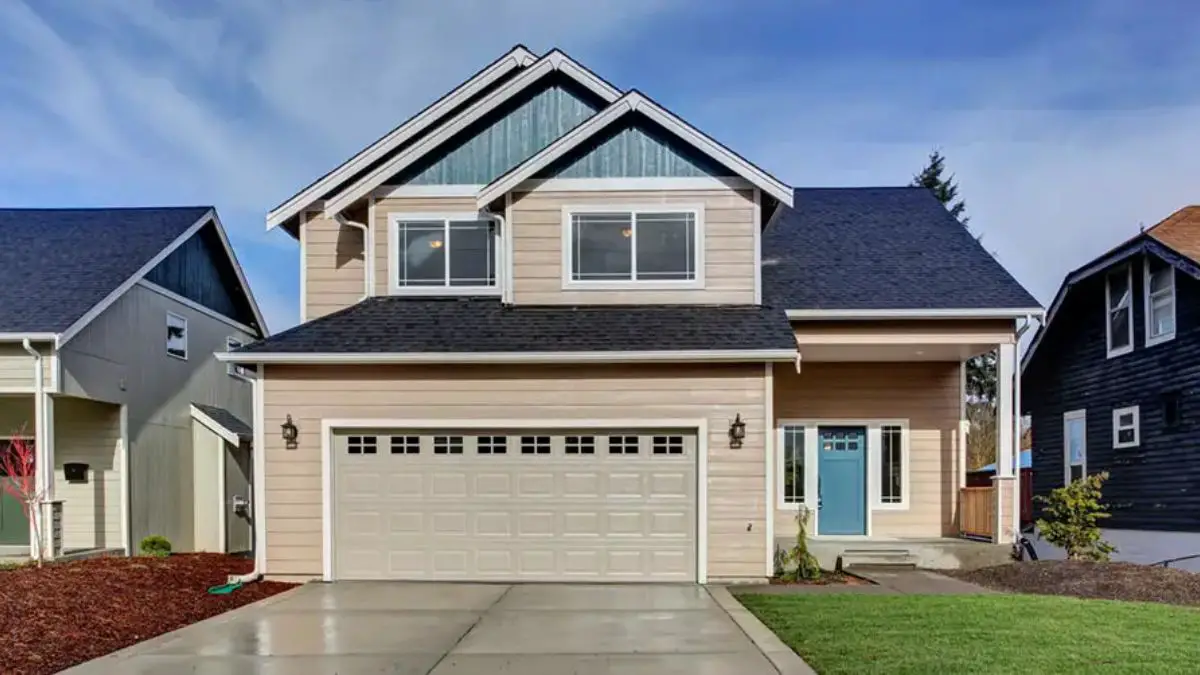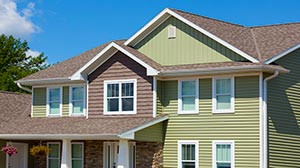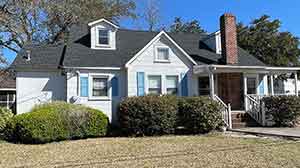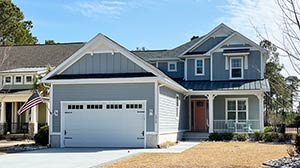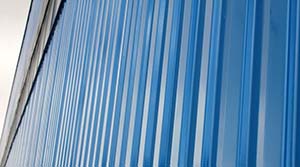
If woodpeckers are giving you a hard time, you and NASA might share history. In 1995, NASA was gearing up to send the Discovery Shuttle into space. Everything was going according to plan. That was until woodpeckers decided the shuttle made a cool surface to drum.
Imagine putting millions of dollars on the line only for pesky woodpeckers to like your vessel and decide to ‘decorate’ it.
Woodpeckers typically peck at wooden structures such as trees, but they will also peck at non-wood objects, such as vinyl siding. There is a 10% chance woodpeckers will peck at your house’s vinyl siding. Woodpeckers primarily peck at non-wood surfaces to mark their territory or attract a mate.
Waking up to birds chirping outside your window sounds delightful. Having a woodpecker drumming on the side of your house is a nuisance. We’ll look into why they do it and what you can do to regain your tranquility.
Why Do Woodpeckers Peck On Your Home’s Vinyl Siding?
Woodpeckers use pecking for many purposes. It’s an evolutionary development that determines their next meal, their next mate, and their next home. They primarily do it on wood. Three researchers conducted a study to investigate the relationship between houses and woodpecker pecking. The Cornell University researchers found that woodpeckers pecked at houses for three reasons.
- Food
- Mates
- Territory
Like most animals, these are life and death reasons, at least from the birds’ side. But for a homeowner, it’s damaging. Woodpeckers can cause the average homeowner up to $300 in damages.
Each need for a woodpecker depends on the house’s surface. The study mentioned above concluded each siding had varying degrees of susceptibility to woodpecker damage.
- Grooved plywood siding (73%)
- Shakes (60%)
- Tongue-and-groove and board-and-batten (45%)
- clapboards (29%)
- non-wood (21%)
Each surface sustained damage specific to the material.
Grooved plywood and shakes are mostly wooden. As such, woodpeckers will peck relentlessly at each surface in search of insects or other food.
Tongue-and-groove and board-and-batten made prime grounds for nesting and roost-holes. The non-wood siding was great for drumming.
Vinyl siding is a plastic material used in finishing a house’s exterior. It’s a great component since it’s aesthetically pleasing, less susceptible to water damage, and withstands harsh weather conditions. Already, it’s not the best place for a woodpecker to peck. But the birds do it anyway.
While it isn’t prime material for woodpeckers, vinyl siding still has some resonance. It will produce some sound if a woodpecker pecks at it. Woodpeckers pecking at vinyl siding is known as drumming—woodpeckers drum for two reasons.
1. Drumming as a Mating Call
Most birds sing to communicate. However, woodpeckers don’t have a song. They will find an object and repeatedly drum to announce their presence to prospective mates in that area.
The woodpecker with the most persistent or most vigorous drumming is deemed stronger. A female woodpecker might take this as a sign to pick the woodpecker as a better partner.
Typically, they would do this in wood since that’s where they exist in larger numbers. However, if you live where there is less wood cover, they will use your vinyl siding. Vinyl siding is not as effective as wood. It has less resonance, but it works within a small radius for the woodpecker.
2. Drumming as a Territorial Announcement
Woodpeckers, like other birds, are territorial. They announce their territory by drumming a different rhythm on a surface. They have a unique repetition cycle for territory marking that works as a warning sign to potential competitors.
Normally, drumming for territory and a mate are intertwined. The dominant woodpecker with an attractive territory wins a prime mating partner. However, that comes at the expense of your house if the target spot is your vinyl siding.
Additional Reasons Why Woodpeckers Peck Vinyl Siding

While the two primary reasons mentioned above account for the vast majority of cases, woodpeckers sometimes peck vinyl siding for a few additional reasons.
Looking for Food
If a woodpecker pecks at wood, it’s almost always a sign they’re looking for food, or they suspect there might be food around. They’ll peck at your vinyl siding if your compound has bird food. They will attempt to drill into the siding to see if there is more food.
They’ll peck at your house to alert other members of the group if your area has food. Bird feeders are attractive to woodpeckers, and you might be dealing with an orchestra of woodpeckers hammering on your siding, calling other birds to come to eat in your yard.
However, since vinyl siding hardly dents like wood, they will keep pecking if the vinyl siding has natural earth coloring. If your vinyl has earth tone colors, woodpeckers will go at it and even alert other woodpeckers about a potential food source.
Pecking as a Predator Warning
They might be territorial, but woodpeckers also notify each other when they see a threat. They’ll drum against a surface using a different rhythm if they spot a common predator nearby. They’ll warn each other about the presence of bobcats, coyotes, foxes, and hawks. These are all predators with whom woodpeckers share habitats.
Unless you live near the woods and your house or cabin has vinyl siding, there is little chance that the drumming will be a warning sign against predators.
Pecking to Create a Nest
Woodpeckers create cavities where they can create nests. Typically, they pick aging trees since they offer more stability and security from predators. Vinyl siding with earth tone colors will attract woodpeckers, especially before the mating season. They tend to try and get nesting areas for their young ones.
However, it is just this scenario; houses with wood siding covered in earth-toned stain experience the highest risk (97%) of woodpecker damage.
How To Keep Woodpeckers from Damaging Your Siding
Vinyl siding is one of the safest materials in a woodpecker-prone area. Still, the constant drumming can harm the siding. The noise is annoying, too.
Reducing the number of woodpeckers drumming on your vinyl siding starts with eliminating primary attractants. If the woodpeckers are motivated by food and trees around your home, these are the first to go.
1. Eliminate Food Sources
A lot of homeowners like to have birdhouses and birdfeeders around their homes. Unfortunately, they have no control over what comes into their compound to feed. If woodpeckers identity your home as a prime spot for food, they mark the entire area as a comfortable patch on which they can settle.
If you must feed birds, go for something like suet feeders. The Cornell study mentioned above also found that woodpeckers targeted houses with suet feeders less than those with feeders. Houses with seed feeders had a 26% chance of damage. Homes with no feeders had a 30% chance of woodpecker damage, while houses with suet feeders had a 12% chance of woodpecker damage.
Suet feeders are a creative take on birdfeeders that incorporate cages and bird food. Ideally, you should hang the suet feeder far from the bird’s target area. It’s a superb idea that works well with most winter birds. You can install different suet bird feeders around your home to reduce woodpecker activity on your vinyl siding.
- Cage suet feeders: The principle is simple. Hang a suet cake from a tree or any yard installation away from the target site. Typically the suet cake is in a cage.
- Sheltered suet feeders: These are your everyday suet feeders with some overhead protection. They resemble little houses. They’re perfect for wet areas.
- Upside down suet feeders: An upside-down feeder is a regular feeder without access to the side or the top. It’s specially made for birds that feed upside down. They can only access the food from the bottom of the feeder.
- Suet ball feeders: Suet ball feeders allow enthusiasts and nature lovers to have different suet balls in one feeder. One large suet ball would probably be one type of feed. Suet ball feeders have more food variety for various bird types.
- Tail prop suet feeders: Woodpeckers need extra stability when they feed. Tail prop feeders have an additional extension that supports a woodpecker’s tail when it feeds. The structure is built like a regular cage feeder.
- Suet plug feeders/Cylinder suet feeders: These are the best distraction for woodpeckers. They have a log-like resemblance that might be great for attracting the birds away from your vinyl siding.
- Combo feeders: Combo feeders typically have suet feed and common birdseed. These are for bird enthusiasts who don’t mind a variety of birds on their property.
These feeders are not a complete deterrent. They are a solution you can use to keep woodpeckers and other birds off your yard and direct them to a safer spot. Additionally, the birds can clear insect populations around your home.
2. Repaint Your Vinyl Siding
Earth-tone paints(reds, browns, blues, greens, and natural) that resemble wood are highly attractive to woodpeckers. The Cornell University study found a 97% probability of woodpecker damage on houses with earth-stained siding.
Avoiding these colors goes a long way in keeping woodpeckers from your vinyl siding. Go for other colors such as gray that would naturally confuse woodpeckers. Pastels (white, light blue) and other bright colors would work best.
3. Install Dangling Mylar Strips
Dangling Mylar Strips are a perfect solution to keeping woodpeckers away from vinyl siding. It uses sound and sight to scare the birds away. It’s one of the most nature-friendly and humane ways to keep birds from overrunning your home.
Mylar strips reflect light when the wind blows in their direction. Also, they release a crackling sound that startles birds. Both sight and sound are powerful deterrents to most bird species.
4. Install Irri-Tape
Irri-tape works just like Mylar strips. It is a reflective material that flaps and cracks when the wind blows. It comes in rolls of about 100 feet and 500 feet. You don’t necessarily have to place them directly on the siding. You can rip off a few strips, make a bundle and hang them near strategic spots.
It’ll make your yard neater and keep the woodpeckers away.
5. Moving Ribbons
Moving ribbons are another example of visual deterrents that could keep woodpeckers away from your home. They might not be the neatest strategy, but they will work for those few months where woodpecker drumming is most prevalent.
You can choose to use aluminum ribbons or use regular cloth. Regular strips of cloth would be the best and cheapest DIY solution.
6. Netting
Netting is a great temporary solution to keep woodpeckers away from your vinyl siding. Install the net a few inches away from the siding. It prevents woodpeckers and other birds from damaging your home. Also, you can use netting to protect yard plants.
While it is effective, it has some downsides.
- It’s not the most attractive sight to have a huge net over your house, especially on the house’s front.
- It takes a large roll of netting to cover a large section of the house.
How to install netting to keep away woodpeckers:
- Buy mesh that’s one inch or less. The 2-inch mesh will likely not work against all woodpecker sizes.
- Make sure the installation is as taut as possible. Otherwise, you might trap the birds. That’s not too bird-friendly.
- Monitor the netting, especially if there’s bird weather after you install it. Large holes are common, and they’re the perfect welcoming entrances to the siding.
- Pro tip: Get more netting/mesh than you need. Also, it helps when you get a professional installer to do it. Still, you can DIY if you have the skill and time.
7. Painting the Siding
If visual and audio deterrents don’t work, go for the most repulsive option, the Beakguard woodpecker deterrent. This paint is available in bright colors that keep woodpeckers away. However, if woodpeckers still come close to the vinyl siding, this acrylic paint keeps them away with a foul smell that irritates the birds.
8. Reclaim IT Insecticide
The primary reason for woodpeckers flying into your yard is food. Reclaim IT insecticide kills insects and repels any incoming insects. The woodpeckers get less motivation to infiltrate your yard, and your house stays woodpecker-free.
Mix water in a hand pump or hose-end sprayer and add Reclaim IT insecticide. The ratio should be 0.5 fluid ounces per gallon of water. That should cover 1,000 square feet. Use two gallons per square foot for the mixture to soak properly into the ground.
However, note the insecticide will repel pollinators, too.
9. 4 The Birds Repellent
So far, we’ve covered visual deterrents, olfactory deterrents, and sprays to keep off woodpeckers. Woodpeckers — and other birds — hate any sticky feeling on surfaces. That sticky feeling is what makes 4 The Birds Repellent a potent anti-woodpecker spray.
Identify areas where the woodpeckers like to drum. Spray one gallon of the repellent on surfaces such as trees near the house. The sticky feeling irritates the birds, and they learn how to keep off your property.
What Is the Best Siding to Prevent Woodpeckers?
Technically, vinyl siding is not bad siding for woodpeckers. However, consider using cement-fiber siding, one of the best sidings for woodpeckers, before building or buying a house in a woodpecker-rich area.
Cement fiber siding, also known in construction circles as James Hardie Siding, is made from fiber, cement, and cellulose.
It’s installed like regular wood siding and nailed into the home. Despite its high initial installation cost, it is one of the safest and most effective woodpecker deterrents.
Final Thoughts
You made a great choice when you chose vinyl siding for your house. Unfortunately, woodpeckers don’t care whether it’s a house or an advanced scientific marvel heading to space. They’ll do what nature intended them to do.
Still, you have the power to control how much damage they can inflict on your property.


